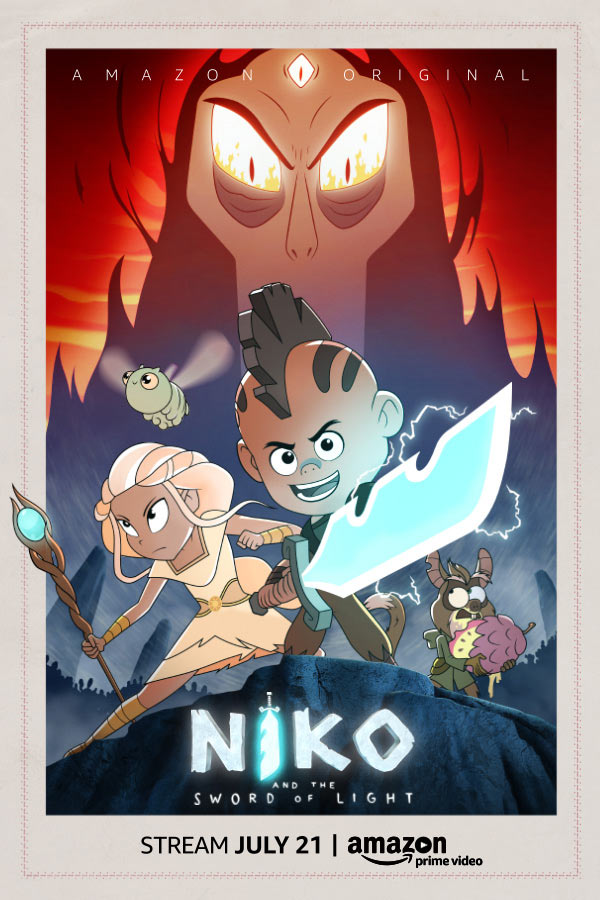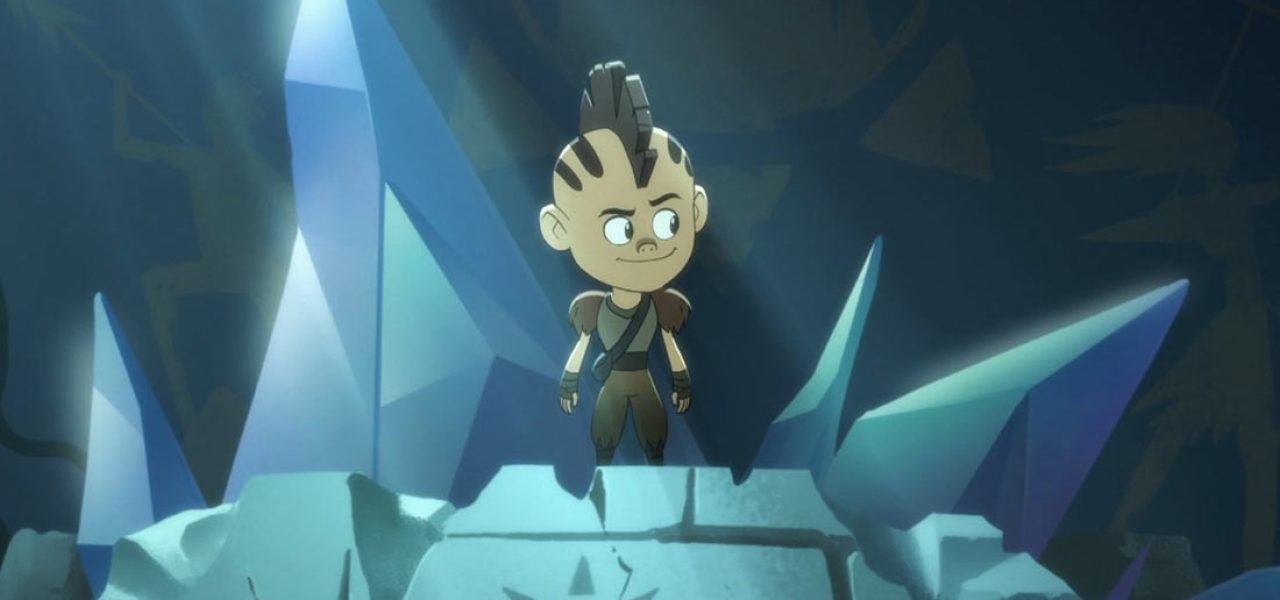
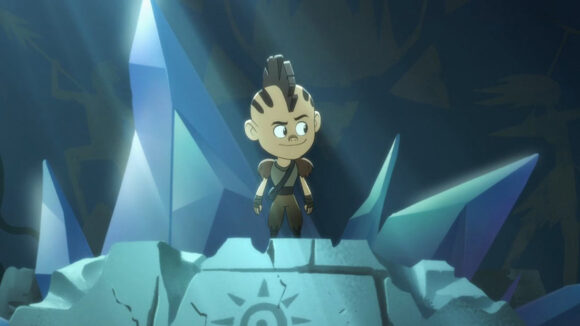
INTERVIEW: Rob Hoegee And Chris Prynoski On The New Amazon Original Series ‘Niko and the Sword of Light’
Known more for its mature animated standouts like Metalocalypse, Black Dynamite, and The Venture Bros., Titmouse has teamed up with Amazon Studios to deliver a promising epic fantasy adventure for the 6-11 demographic called Niko and the Sword of Light.
As internet powerhouses like Amazon and Netflix have jumped into the children’s programming game, the mediascape has been altered in revolutionary ways. Because they have such significant resources and business models, they’re not beholden to traditional concerns when it comes to crafting original series.
“It’s not about volume for them; it’s not about saturating the market with product,” Niko showrunner Rob Hoegee (story editor on Teen Titans, head writer on Thunderbirds Are Go) told Cartoon Brew by phone, alongside Titmouse co-founder Chris Prynoski. “They really want to put themselves out there, which is tremendously gratifying as a show creator, because your mandate is simple: Make a good show.”
Niko and the Sword of Light is just that: A good animated program, taking place in a fantastic universe filled with accessible heroes (and villains), uncanny creatures, surreal environments, captivating action, sharp humor, and an all-star cast that should make fans of fantasy-adventure shows like Avatar feel comfortably at home — and not just because its eponymous hero looks like Aang with a mohawk. Delivering quality goods from the start of a series is essential nowadays, given the current “gold rush of television animation” and the plenitude of viewing options available today, says Hoegee.
Cartoon Brew caught up with Hoegee and Prynoski to discuss how Niko was developed as a series, the death of both terrestrial and cable’s broadcast models, and how delivering all of a show’s episodes at once forces creators to think differently about a production.
Cartoon Brew: Tell me a little bit about how this project evolved?
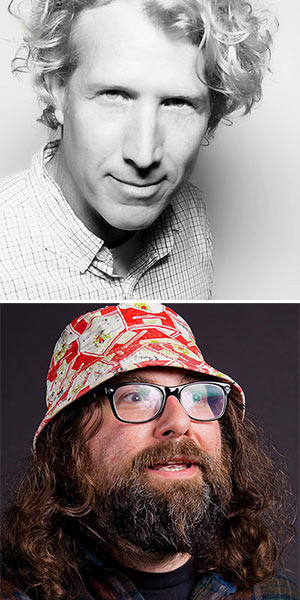
Rob Hoegee: Amazon had its eye on this ever since the Kickstarter campaign for Niko’s iPad motion comic app. It was hugely successful, and the smart folks at Amazon thought it would make a terrific show, so I was fortunate enough to be invited along to turn it into one. The pilot [also produced by Titmouse] came quickly, and we went from there. The desire to have Titmouse on was high on Amazon’s list from the start.
Chris Prynoski: Yeah, I got the call to work on it, and Amazon was like, “Ooh, have I got a show for you guys!” Amazon was pretty new to this at the time; they hadn’t done a 6-11 action show yet. I was already familiar with the motion comic app, so I actually knew what they were talking about. It was sort of a lovefest from the beginning.
Rob Hoegee: Once we got the green light, the pilot had made it past the second round out of Amazon Studios. We were really there early on, getting in on the ground floor.
What are your thoughts on Amazon as a producer and distributor of animation? They’re new to the game, but have enormous resources.
Rob Hoegee: I have to give them a lot of credit, because you’d think that a company with those enormous resources, which not only has an ability to reach an audience but the funding to make quality programming, would just go crazy, but they don’t. They’re very particular, and they have discriminating tastes. They’re also cautious in a good way. Their sole objective is to make the best shows they possibly can. It’s not about volume for them; it’s not about saturating the market with product. They really want to put themselves out there, which is tremendously gratifying as a show creator, because the mandate is simple: Make a good show. They don’t put a lot out there, but when they do, you can be assured that it will be high quality. I think their amount of Emmy nominations, in animation and live-action, backs that up.
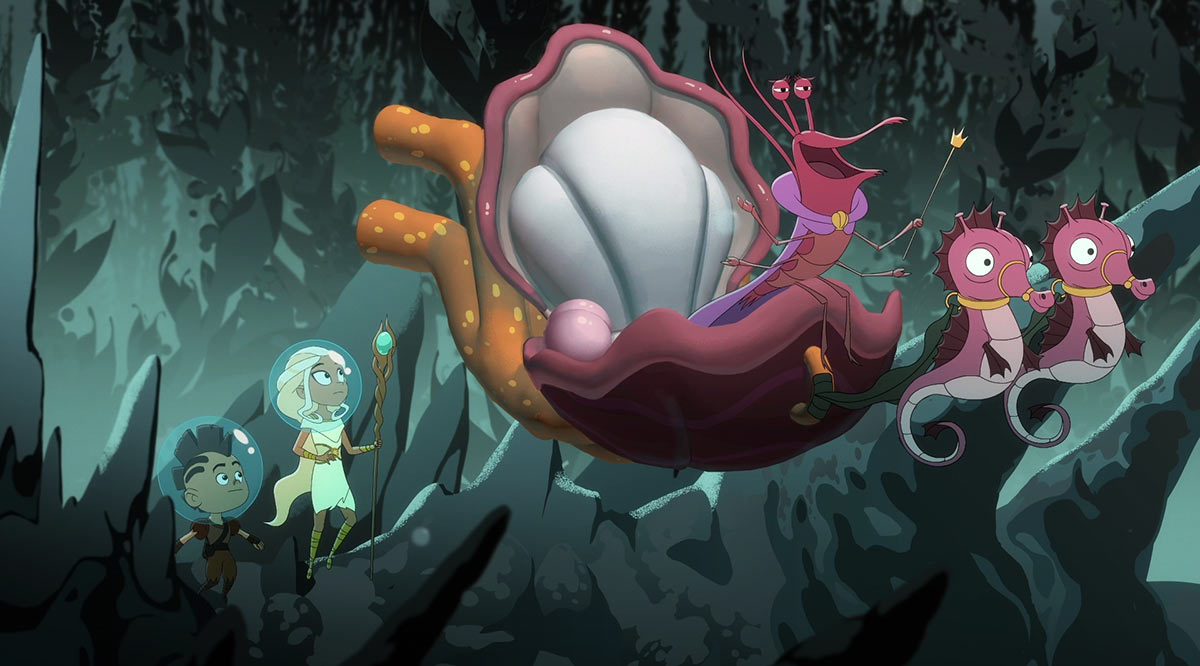
Given their sprawling concerns, Amazon needs quality in order for their productions to not only stand out amongst their other business, but also the sheer amount of programming that’s already out there.
Rob Hoegee: Absolutely. Today, it’s something of a gold rush for television animation. There are so many shows to choose from out there, which is great for people like Chris and I, but it can be hard for audiences to cut through the noise. It’s exciting to launch a show, but it’s also terrifying.
Chris Prynoski: I also think there’s a lot of excitement about the Amazon Prime app going onto Apple TV. In the past, one of the challenges was simply to find shows on Amazon Prime; a lot of people who had it didn’t know they could watch shows on it, but I think the word is getting out now.
Rob Hoegee: The choices now are unbelievable. If viewers don’t like a show, with a literal tap or swipe of their fingers, they’re onto something else. In many ways, the terrestrial or even cable broadcast model is done. Viewers are able to choose what they want to watch, when they want to watch it, and that really puts the pressure on show creators to make sure they’re bringing their A games, because there is no margin for error. If you don’t hook your audience and get them invested in your show and characters right away, then you don’t stand a chance.
How did you respond to that pressure with Niko and the Sword of Light?
Rob Hoegee: It helped that the source material was incredibly engaging. It’s a universe you want to get lost in, visually speaking, so the ground rules were set from the beginning. But we also realized that this was an opportunity to make a show that we would’ve wanted to watch when we were kids, and since a lot of us who make the show also have children, it’s one that we want our kids to watch too. We want to watch it with them. Knowing that, and knowing that there isn’t much original fantasy adventure out there right now, we were able to get lost in our world. That’s one of the advantages of an original concept: You’re not beholden to canon, you’re not beholden to rights holders, and you’re not beholden to diehard fans who are going to nitpick every little thing. We really had tremendous freedom.

That freedom seems to translate to the show, which has fantastic characters and environments which can pull viewers in. It reminds me of the early days of Avatar: The Last Airbender.
Rob Hoegee: We all loved Avatar, and certainly would hope for their [level of] success. This is a serialized adventure; each episode begins where the last one ends, sometimes almost to the frame. So, in many ways, it really is a seven-and-a-half-hour-long movie. But we really wanted something that is engaging, with characters that our audiences can connect with. We wanted to create a show that felt emotionally real. On one hand, it’s a very funny show, but it’s also very dramatic. It ranges the full scope of human emotion. As a result, I think our characters are immensely enjoyable; even the ones who aren’t enjoyable are enjoyable. [laughs] We probably have one of the greatest television villains that I have seen in a long time. I think he’s one for the ages.
He reminds me of Aku from Samurai Jack, but with more humor, which helps to offset some of the show’s darker moments.
Rob Hoegee: I agree. I have a storytelling rule: As dark as I want to go, and in this show we can go dark, I have permission to go light. Because this is also a series that we don’t take too seriously; we had fun making this show and I think that comes across on the screen.
The animation talent is significant as well, including co-director Sung Jin Ahn, who worked on Genndy Tartakovksy’s prematurely canceled wonder, Sym-Bionic Titan.
Chris Prynoski: Yeah, we were super lucky that Amazon was willing to put together a sizable production budget so we could animate in both Los Angeles and New York, and I think it shows. We were really able to get nuance. Sung Jin also directed the pilot; he’s amazing. He was an intern way back when we were making the introduction to Avatar: The Last Airbender. We drew all of that on pieces of paper, and then painted the backgrounds on…shit, I can’t even remember what it was. [laughs] But back then, he was a scanner who used to scan in all of our drawings, and now he’s a director on a show that is similar in tone.
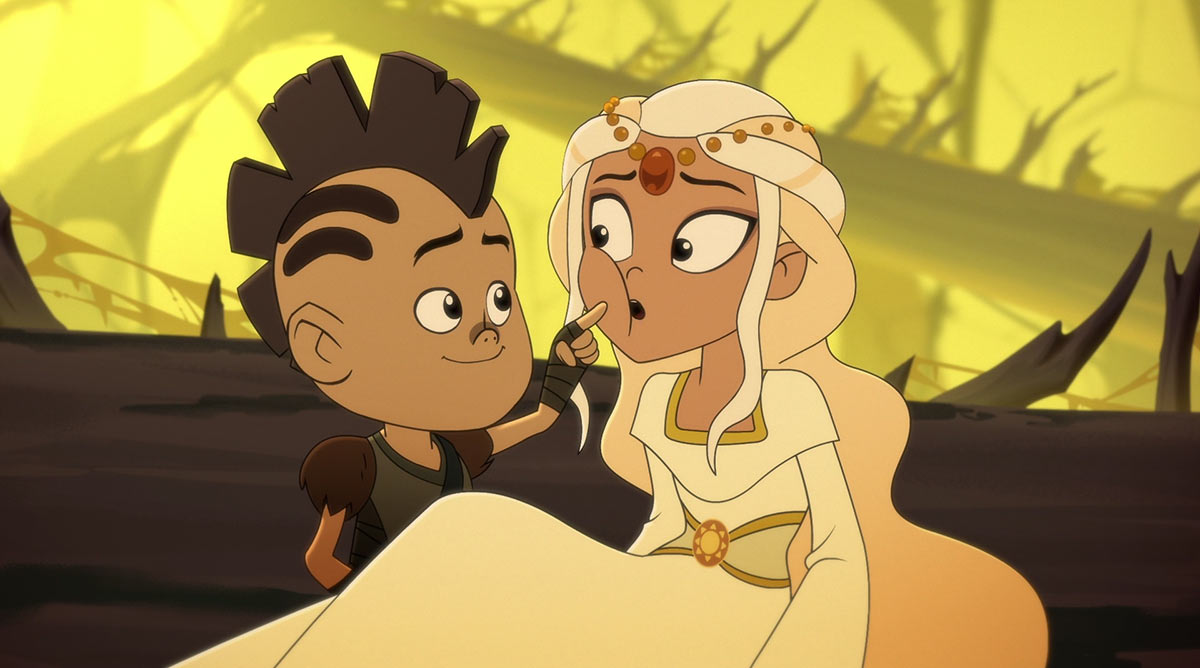
It’s funny because each of the episodes end on cliff-hangers, but you can immediately watch them all, instead of waiting a week like we had to back in the day. Has that new media reality changed your approach to making shows?
Chris Prynoski: I know it does from the production side, in terms of deliveries. Certainly, Adult Swim was very hand-to-mouth; they’d start airing when they had one episode, and then hope for the best. Some other clients want six or so in the can, before they start airing. But with Amazon, you’ve got to have them all finished, because they’re all going up at the same time.
Rob Hoegee: From a story perspective, it does change things, especially when you’re making a serialized show. I mean, I’ve done a lot of episodic shows where a lot of the time it would be like, “Oh yeah, we’ve got a story due this week; what’s the premise going to be?” And we’d talk about it, and the next day we’d have a premise that we’d need to get approval for, and then we’d be off to write it.
But now we’ve got to basically plan out the entire season in advance; we have to get everyone on board so we know exactly where we were going. Every single episode has to be mapped out, because we have a lot of complex plot threads that need to be picked up in one episode and paid off in another.
I mean, it’s still a show for kids, so we want to keep it simple enough, but there is storytelling continuity that does require much advanced legwork to make sure we’re not seven episodes in and then realize that we’re lost. We have to think about it all ahead of time. But the nice thing is that once we have achieved that, the hard work really is done, and we can focus on the nuances within the script. In many ways, that results in a higher level of writing, because we’re not worrying about what’s happening next. We’re focused on making what happens next the best we can make it.
